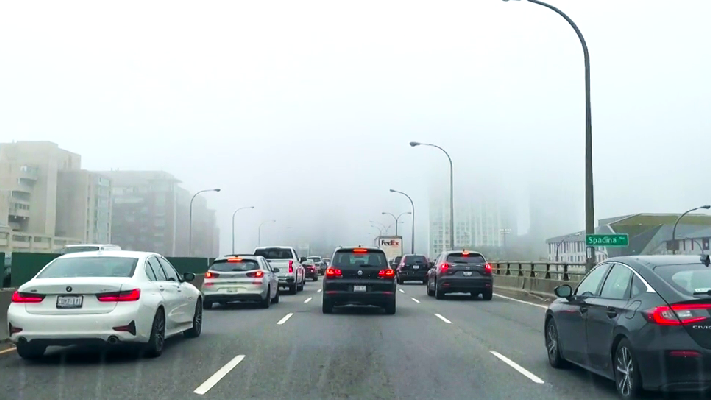Travel
‘It’s just been a nightmare’: Gardiner restrictions are Toronto’s traffic tipping point

In the first of a three-part series on Gardiner Gridlock, CTV Toronto examines the impact that the three-year cut to capacity on the downtown expressway is having on commuters – and their outcry.
As the coffee maker whirs in his Leslieville kitchen, Brandon Parent grabs his lanyard and packs his bag ahead of a long shift at a Toronto area hospital.
An emergency room nurse, Parent is often on the road earlier than most – but his 13 km commute to St. Joseph’s Health Centre in Etobicoke can still take the better part of an hour.
“7 o’clock in the morning, and this is how bad it is,” he told CTV News Toronto from behind the wheel of his Volkswagen as the traffic crawled. “It’s just been a nightmare.”
Brandon Parent drives to the Etobicoke. Ont. hospital where he works. (Natalie Johnson/CTV News Toronto)
The jaunt across the Gardiner took him roughly 20 minutes when he first moved to his east-end home a year ago, but in mid-April major lane restrictions came into effect between Strachan Ave. and Dufferin St., creating a bottleneck that many commuters call a tipping point for Toronto traffic.
“I absolutely love my job. I absolutely love the people that I work with,” Parent said. “But because of the increased time, the commute, it’s the first time where I’ve actually really considered – okay, maybe it’s time to pick up and go somewhere else.”
Some 30 floors up above him, Ellie Landale’s Queen’s Quay condo is a front-row seat to the Gardiner gridlock down below.
“The cars going westbound are barely moving,” she watches out the window.
“We turn on CP24 and look at the traffic report, and it says normal time: eight minutes. Now: 45 minutes.”
Landale used to have the perfect starting point for a drive to see her kids and grandkids west of the city – but her 12-minute car trip to their Etobicoke home tripled when the latest round of Gardiner construction began.
“Drivers are just getting more and more aggressive, because they sit in their car, and they get anxious having to just crawl,” she said.
The 700 m stretch of Gardiner between Strachan and Dufferin is undergoing the second of six phases of rehabilitation work on the aging expressway. That portion of the elevated bridge is being replaced – and the supporting structures fixed – in a massive undertaking that will take three full years and affect some 200,000 cars a day.
But bringing that stretch of highway down to two lanes in each direction cuts the capacity of that section by 30 per cent – at a time when many parallel routes are also closed for construction.
King Street West, for example, is sealed off between Dufferin St. and Shaw Ave. as it undergoes watermain and streetcar track work until November.
The Dufferin-to-Strachan lanes will fully reopen in May 2026 for three months while Toronto hosts the FIFA World Cup, but the work will resume that August, with the closures forecasted to remain in place until mid-2027.
The eastbound on-ramp from Lake Shore Blvd. east of Jameson Ave. is also closed during the construction.
“Given the nature of the civil engineering work that has to be done to reinforce the structure and to maintain safety of both the workers and the vehicles driving through the corridor, unfortunately, we do have to close the lanes, one in each direction,” Roger Browne, the city’s Traffic Management Director, told CTV News.
But many drivers insist a three-year bottleneck isn’t bearable.
“I’ve been doing this every day for three months now,” one driver said while at a standstill on the on-ramp. “It just keeps getting worse and worse.”
“I don’t know how you can expect people to put up with this. This is ridiculous,” said another.
“[The] Gardiner is old! It’s falling apart in front of our eyes!” Mayor Olivia Chow told CTV News. “That’s why we have to rebuild it.”
“I know that the work they are doing is for safety, I get that.” Parent said. “I just feel like it wasn’t well-planned out.”
Parent says he now hesitates to go anywhere that requires driving the Gardiner.
“I kind of felt like I was a prisoner in my own city.”
“It’s the first time that I’ve actually seriously considered leaving a job, and the people I love … just to cut down on the commute.”
In Part 2 of Gardiner Gridlock, CTV Toronto will examine the impact of the construction on businesses struggling a loss of time and money as they contend with the congestion.










